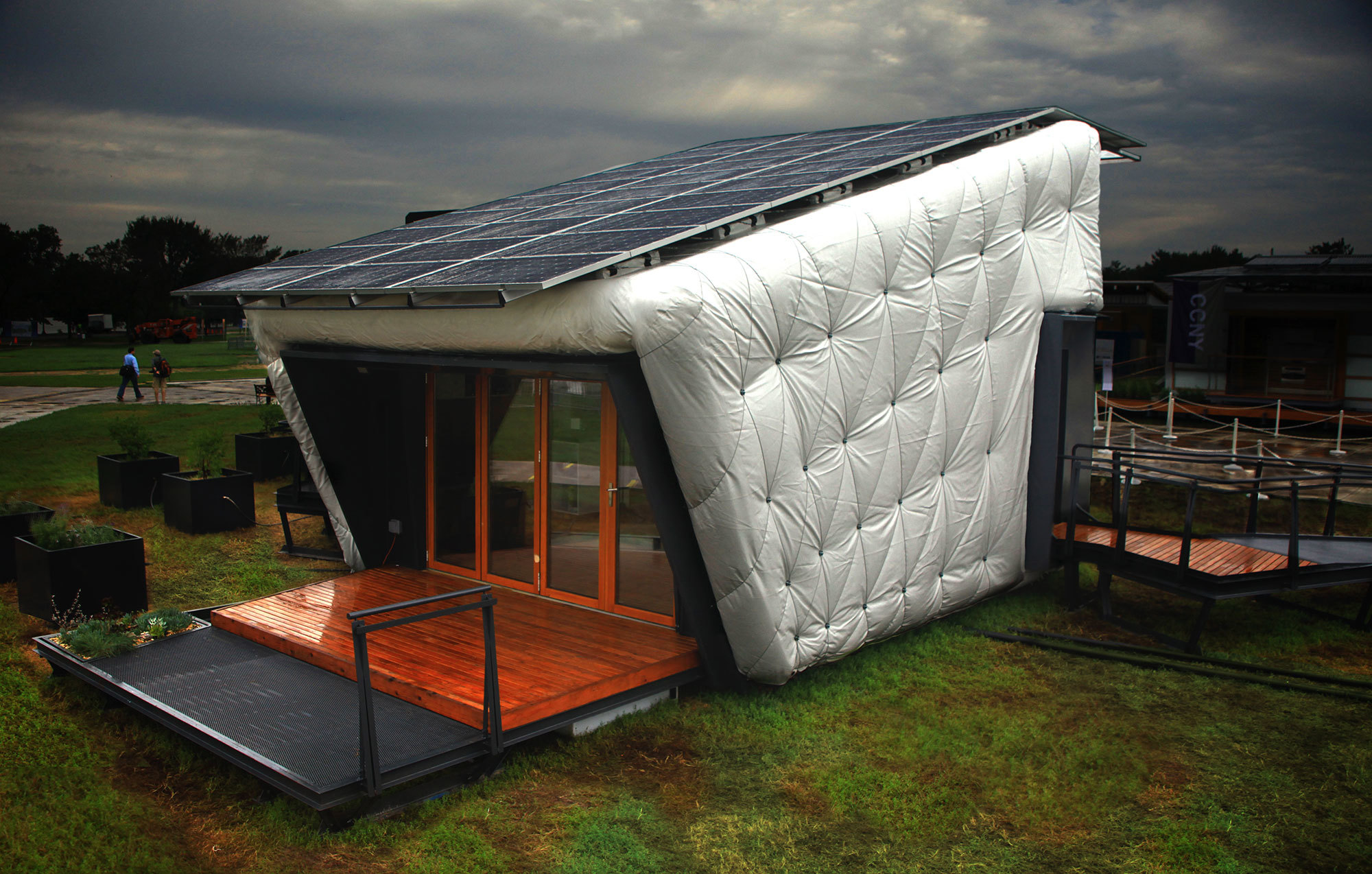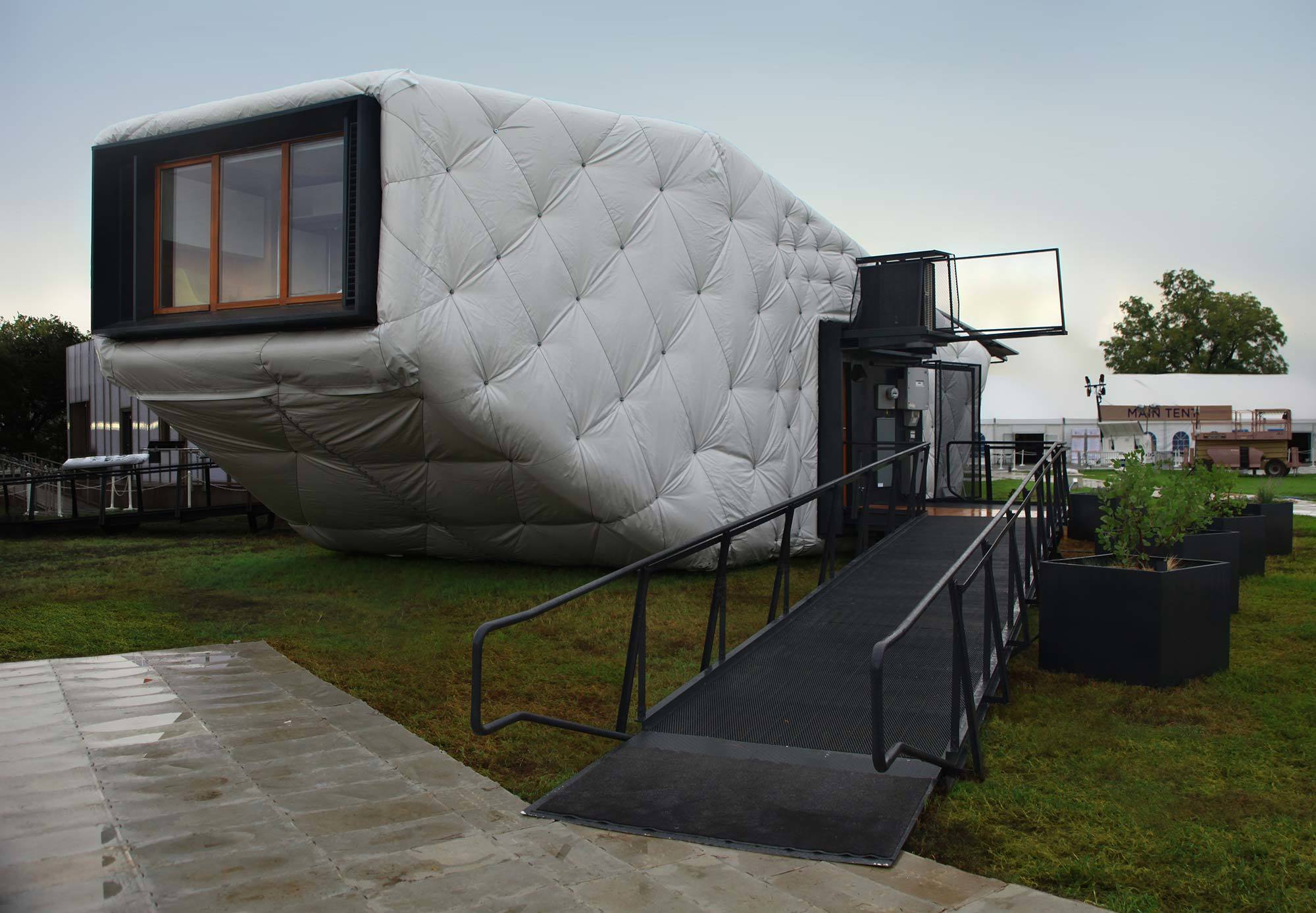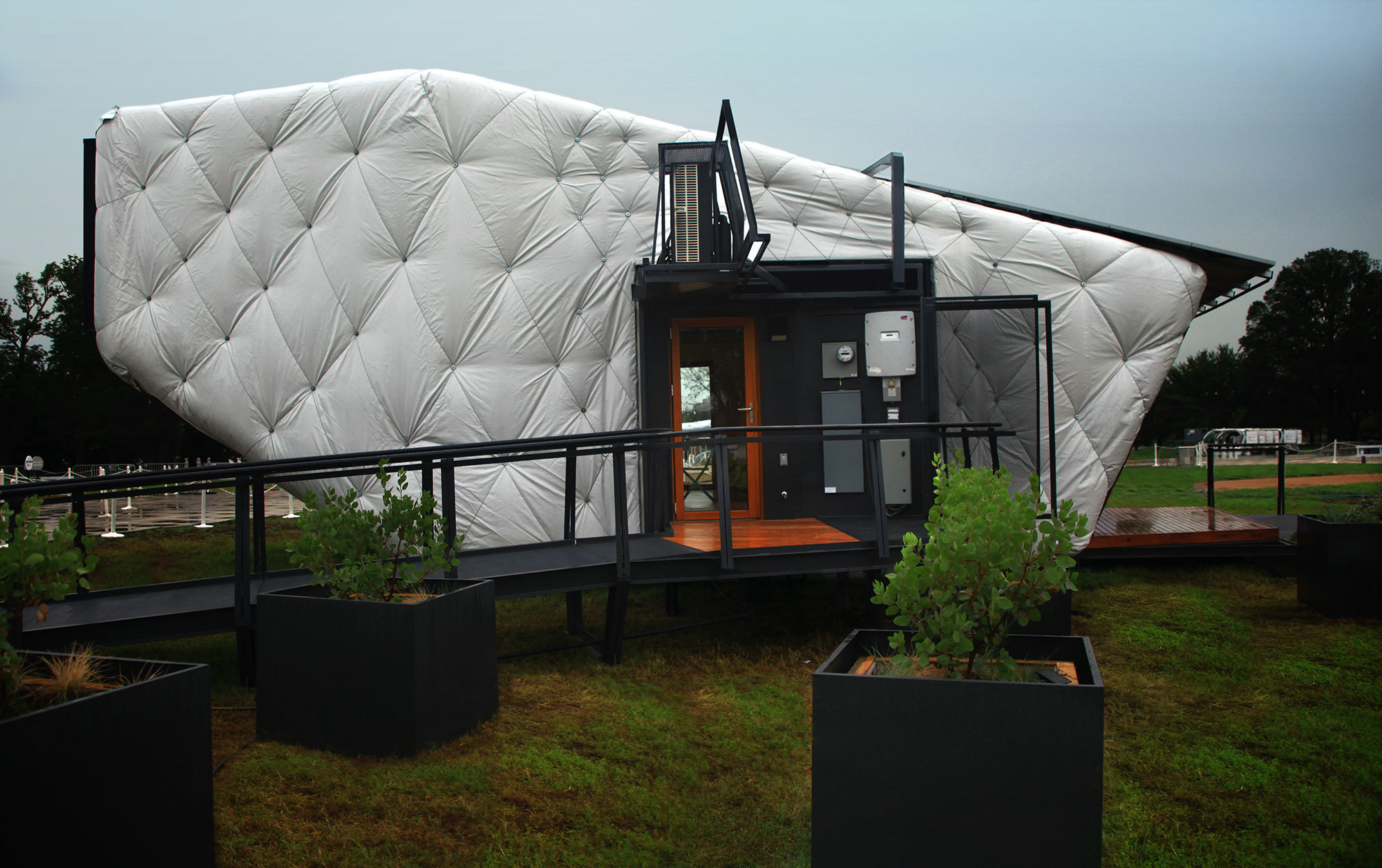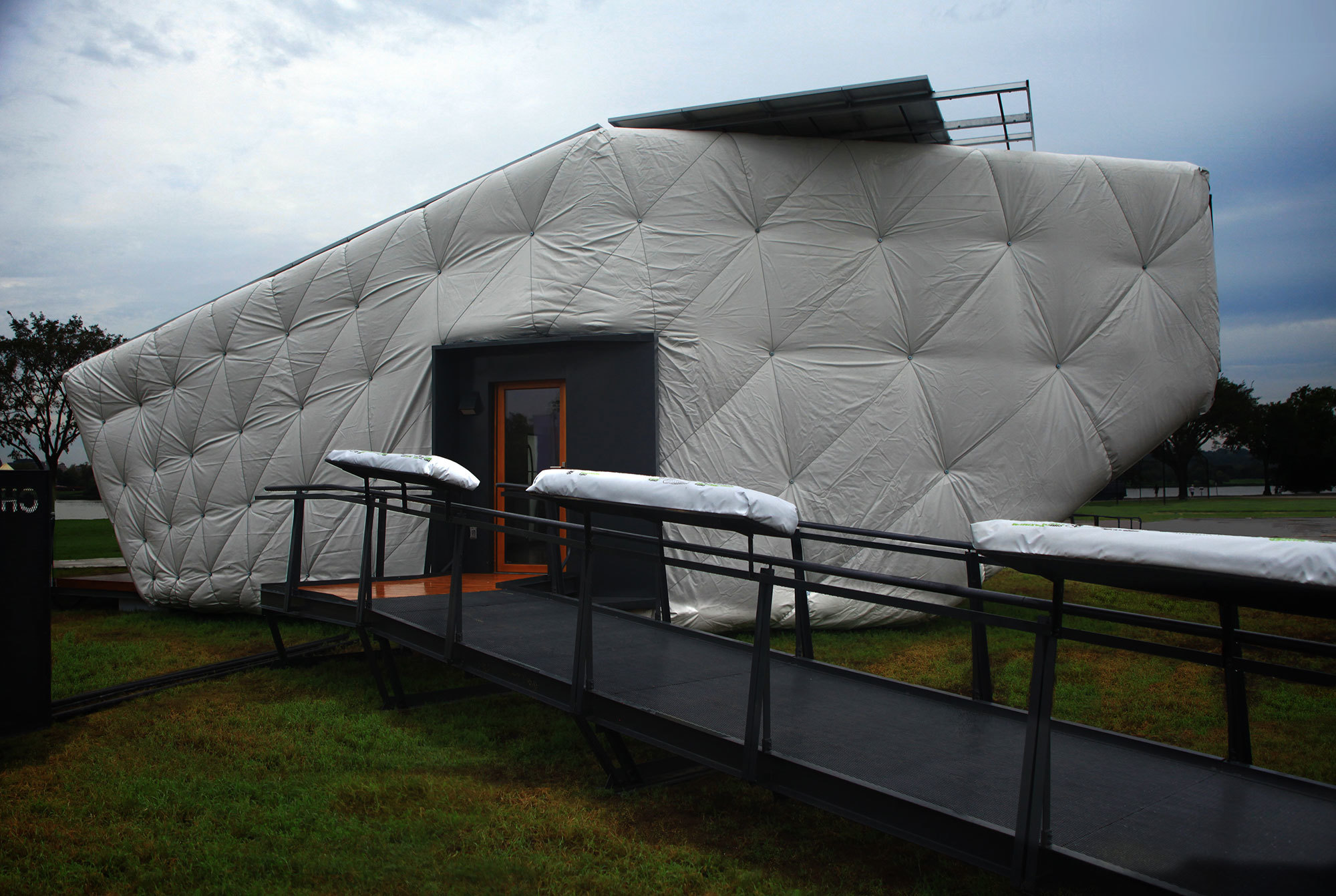CHIP
Praised for its unique look, the 750-square-foot, net-zero home featured a quilted exterior—fittingly compared to a giant pillow or spacesuit—where insulation is stretched around the frame rather than stuffed inside it. CHIP took two years, more than 100 students and $1 million to build. It would cost $300,000 to replicate the structure, including materials and labor.
CHIP’s progressive design was made possible through a transformative gift from Hanwha Solar—who was principal sponsor and exclusive solar module supplier for the SCI-Arc/Caltech team during the Decathlon. The house was equipped with 45 solar panels to power it through the entire duration of the competition and won first place in the Energy Balance contest. In temperate Los Angeles, CHIP’s panels generate three times more electricity than what the home uses—enough to power two electric cars along with the lighting, appliances, and heating and cooling systems. Most notably, the solar panels power an Xbox Kinect motion-sensitive video game system that has been turned into a master command center, allowing residents to turn lights and appliances on and off simply by pointing at them. A 3-D camera also sees occupants of the house and can automatically turn lights on and off as they move from space to space. This motion-sensitive technology allows residents to interface with their home in a more fluid, intuitive way.
The SCI-Arc/Caltech Hanwha Solar CHIP House was built on the SCI-Arc Campus in Los Angeles and shipped on five large trucks to Washington D.C. for the 2011 Solar Decathlon. The house was on display on the National Mall from September 23 to October 2, 2011, along with 18 other solar-powered houses designed by student teams from around the world. Every house in the competition is required to be net-zero—that is, to use only as much energy as its solar panels can generate. CHIP finished in 6th place in the Solar Decathlon 2011 competition. The winner of the U.S. Department of Energy Solar Decathlon 2011 was the University of Maryland.
Through a partnership with the California Science Center in downtown Los Angeles, the SCI-Arc/Caltech Hanwha CHIP Solar House was then on display and open to the public for tours through May, 2012.
The SCI-Arc/Caltech Hanwha Solar CHIP House was made possible through generous support from Hanwha Solar and The Vinyl Institute. Additional sponsors of CHIP included NREL, Southern California Edison, U.S. Department of Energy, Dow Chemical, Resnick Institute, Peter Cross, Bosch, Tim and Neda Disney, among others.



